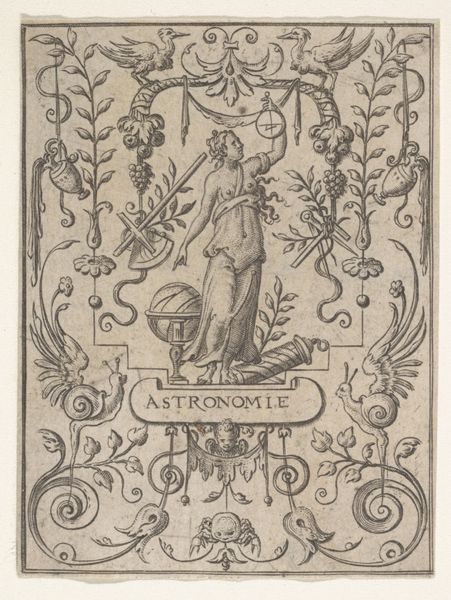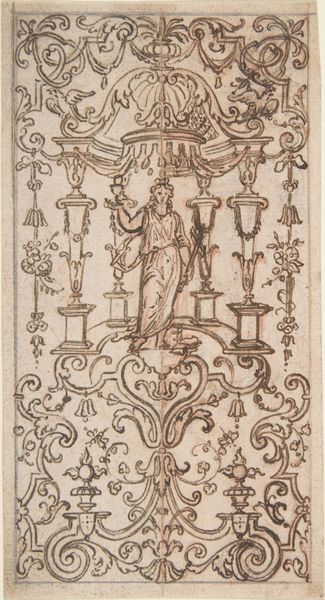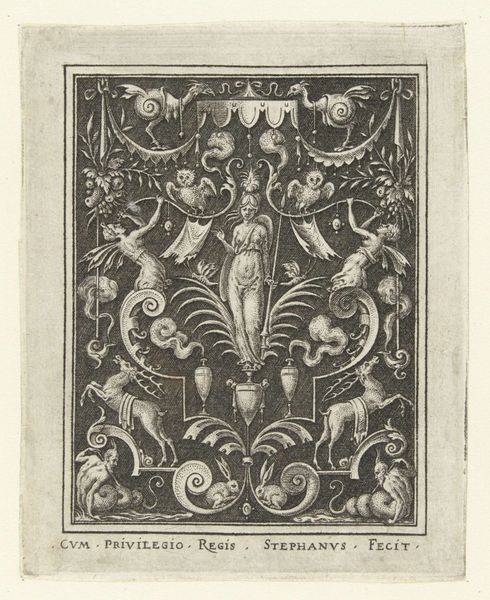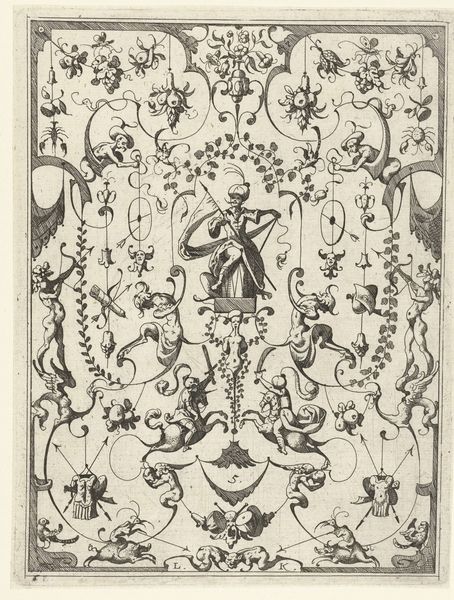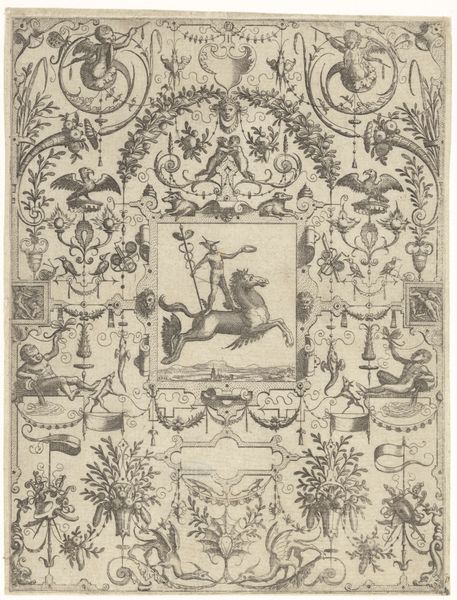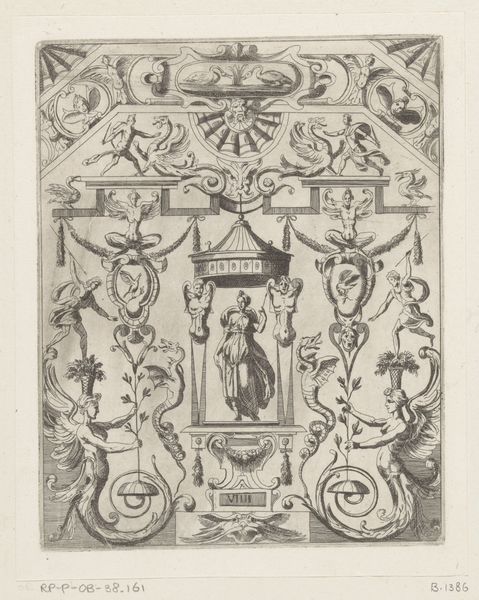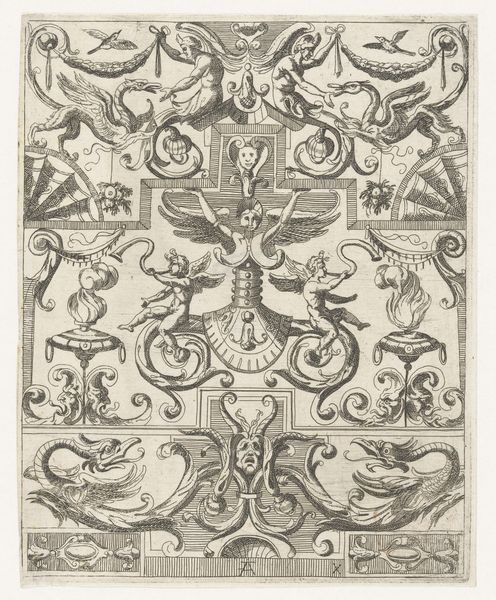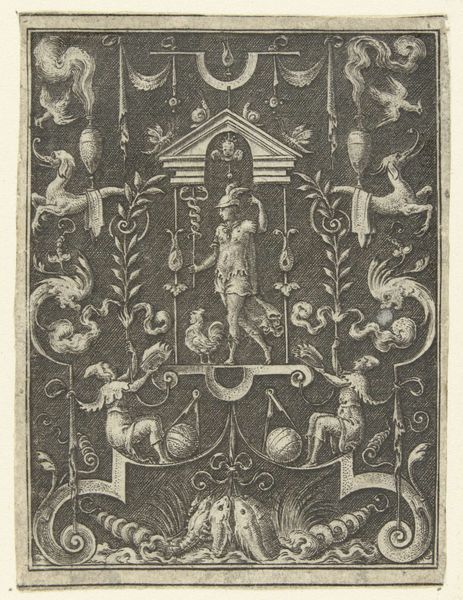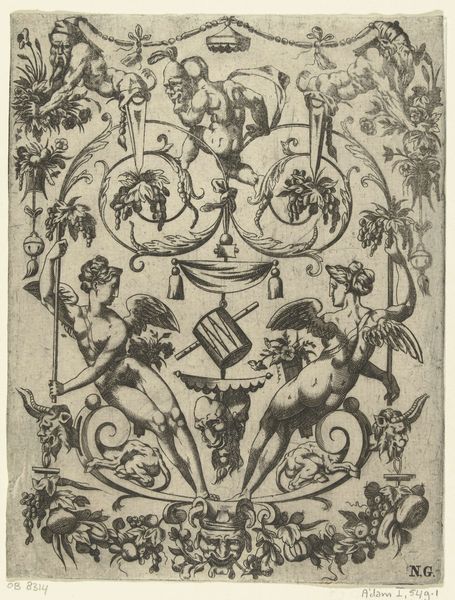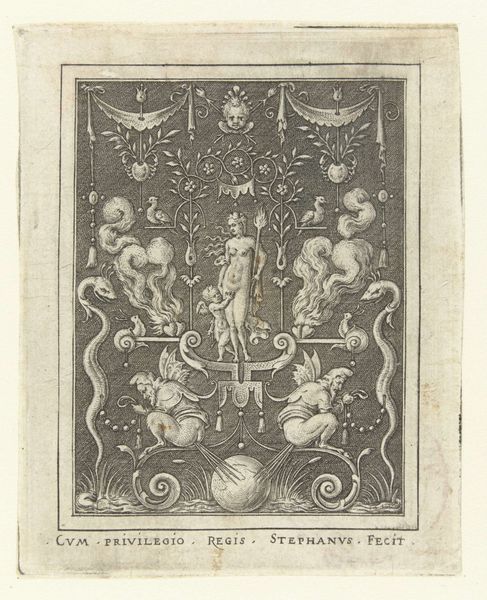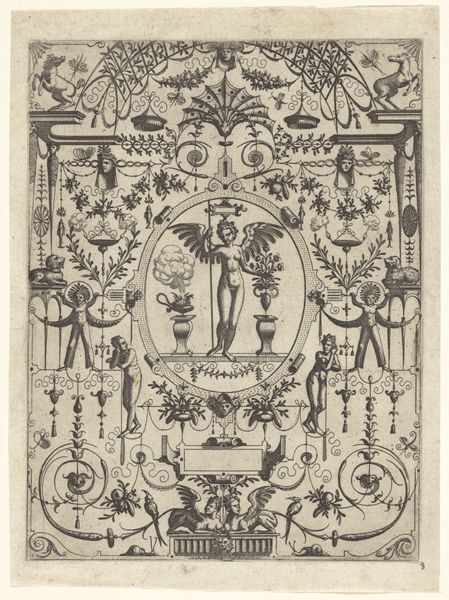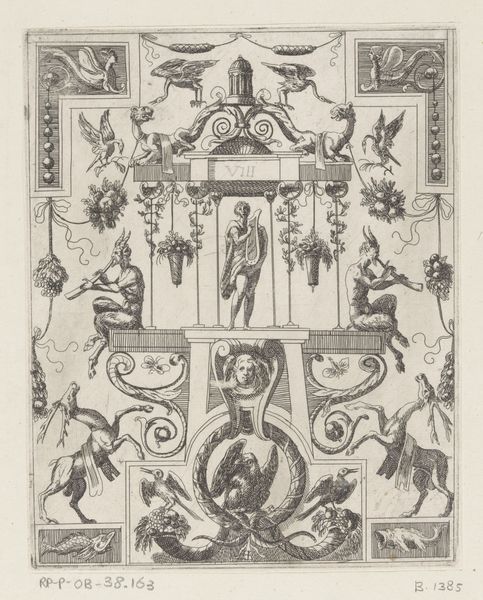
drawing, print, ink, engraving
#
portrait
#
drawing
#
allegory
#
baroque
#
pen drawing
# print
#
pen illustration
#
old engraving style
#
figuration
#
ink
#
pen-ink sketch
#
line
#
pen work
#
engraving
Dimensions: height 167 mm, width 120 mm
Copyright: Rijks Museum: Open Domain
Editor: Here we have "Standing Woman on a Shield-Shaped Pedestal" by Jean Le Pautre, made before 1716. It’s an engraving, a flurry of line work. I find the level of detail in the floral ornamentation to be really striking, but I am curious about how it connects to the central figure... What do you see in this piece? Curator: This print reveals much about the methods of Baroque design. The very act of engraving facilitates mass production; these images were circulated widely, influencing tastes and styles far beyond the artist's immediate sphere. The "shield-shaped pedestal" is not merely decorative; it is a testament to the values associated with noble power and its proliferation. The draped figure alludes to classical antiquity but here is filtered through a lens of French courtly fashion, subtly altering the means of social control. The emphasis isn't so much on pure, idealized form as on its adaptation and commodification for the ruling class. The medium matters: engravings allow the image to reach the hands of artisans, influencing their material practices across decorative objects, furniture, even architecture. Doesn’t it make you consider the workshops and artisans involved in taking these images and turning them into reality? Editor: I do see the shift from ideal form to commodity now! It’s easy to just look at the "art," but this print shows the work being distributed and replicated and influencing artisans who made useful things... Curator: Exactly! We consider this high art today, but understanding its impact in early modern workshops gives insight into its material life beyond just being a beautiful image. We have to consider who had access to these images, what kind of labor went into their production and distribution, and how it played into the construction of social status and economic power at the time. It shows us more about Baroque life. Editor: Thanks! Now I understand that art and its context really is about process and power!
Comments
No comments
Be the first to comment and join the conversation on the ultimate creative platform.
